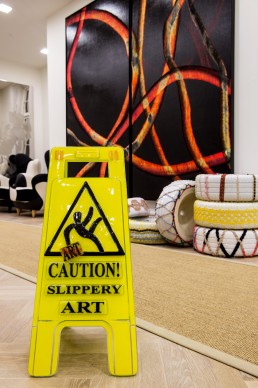The Details of Transporting Art Every Art Collector Should Know
By Peter Letzelter-Smith
Building a fine art collection is thrilling, challenging, and intellectually invigorating. The research, judgment, and discernment that go into collecting art make it a passion that can remain strong over the course of decades. But there are also some aspects of art collecting that are a little more prosaic. Even annoying. Two of those are dealing with the shipping of art and the tax issues that come with building an art collection.
Shipping art is anxiety inducing. Trusting that a fine piece of art that you’ve become emotionally attached to will get from Point A to Point B without being damaged or lost is a leap of faith. But it is one that can be taken with more confidence if basic precautions are taken and thorough advance planning is carried out.

Hire An Expert?
The first step is to seriously consider hiring an expert to carry out the task. There are companies — or subsidiary departments of larger shipping companies — that specialize in the transporting of art. These are the kinds of companies who you should gravitate to when you have artwork that needs to be transported. You can certainly go the do-it-yourself route, but if you do so you should thoroughly research and purchase industry standard packing materials and follow best practices.
Contracting with an art shuttle should also be considered. If time is not of the essence, these providers of shipping services — fully insured and with trained staff — collect artworks that are ready to ship and then wait until one of their trucks is fully booked (or vice versa from cities that are major art markets). This makes for an efficient, economy-of-scale art delivery process.
Art shuttles tend to have specific routes and schedules, but for added cost items can be delivered to a location not on one of their existing routes. Professional art shuttles will feature vehicles that are designed for art transportation, including temperature-controlled trucks that will also have global positioning system (GPS) tracking systems that are activated during the entirety of their delivery runs.

Some of the Basics
Some things to keep in mind when shipping art include: Always thoroughly inspect the pieces that are being shipped and note any existing scratches or other signs of wear and tear. Properly pack the artwork, which can be a painstaking task but a crucial one, depending on the nature of the piece. A sculpture with unusual outcroppings or features will have to be custom packed, perhaps including a custom-made crate. This may drive up the price of transport, but it’s a fact of life. Likewise, the heavier the piece, the more expensive the shipping costs. Another fact of life.
In almost all cases, long-distance shipping will be cheaper by sea than by air. Transit will also take significantly longer. Another fact to keep in mind is that some kinds of art, especially paintings, will need to be shipped in a climate-controlled environment and stored between transit points in similar storage facilities. This too is a factor that will drive up the cost of transport but also can’t be avoided (that is, if you want your artwork to arrive at its destination unchanged from the last time you saw it).

Managing the Potentially Expensive Paperwork
Finally, you’ll want to make sure your artwork is insured for the duration of its journey. If something terrible happens along the way this will at least protect your financial investment. Insurance brokers who specialize in art also have industry connections and knowledge that can be put to use in the case of a lost shipment or a need to do restoration work on a piece that’s been damaged.
If shipping internationally, hiring a shipping company can also help you maneuver the labyrinth of duties and taxes that might be in play. Since the details of these costs differ from country to country, trying to become an expert in your spare time might not be a good use of your waking hours. There’s customs documentation — invoices and forms of paperwork unique to each country — and a whole host of potential penalties, port fees, and other charges that are probably best left to professionals who deal with them routinely.
The fact is both the country where you purchased your artwork and your home country may have applicable duties and taxes that are activated when shipping a purchase internationally. This is especially true for China, which is notorious for its Byzantine art taxation policies, though it has established a number of “free zones,” also known as freeports, where value-added tax (VAT) or customs duties are not activated.
Ultimately, it is your responsibility to know the taxation realities. Galleries will probably have a good handle on the requirements of the country in which they are located, but they may not know the requirements of your home country. A good accountant or tax preparer that is familiar with art collecting would.
Even if you’re not shipping art internationally, each country has tax breaks or penalties for the purchase and sale of art works that you’d be wise to research in advance.
Sources:
https://www.theupsstore.com/pack-ship/artwork
https://www.agora-gallery.com/advice/blog/2014/10/10/how-to-safely-pack-your-paintings/
https://www.artsy.net/article/artsy-editorial-11-tax-secrets-every-art-collector-needs-to
https://www.journalofaccountancy.com/issues/2010/jul/20092096.html
Get your free copy of Artland Magazine
More than 60 pages interviews with insightful collectors.